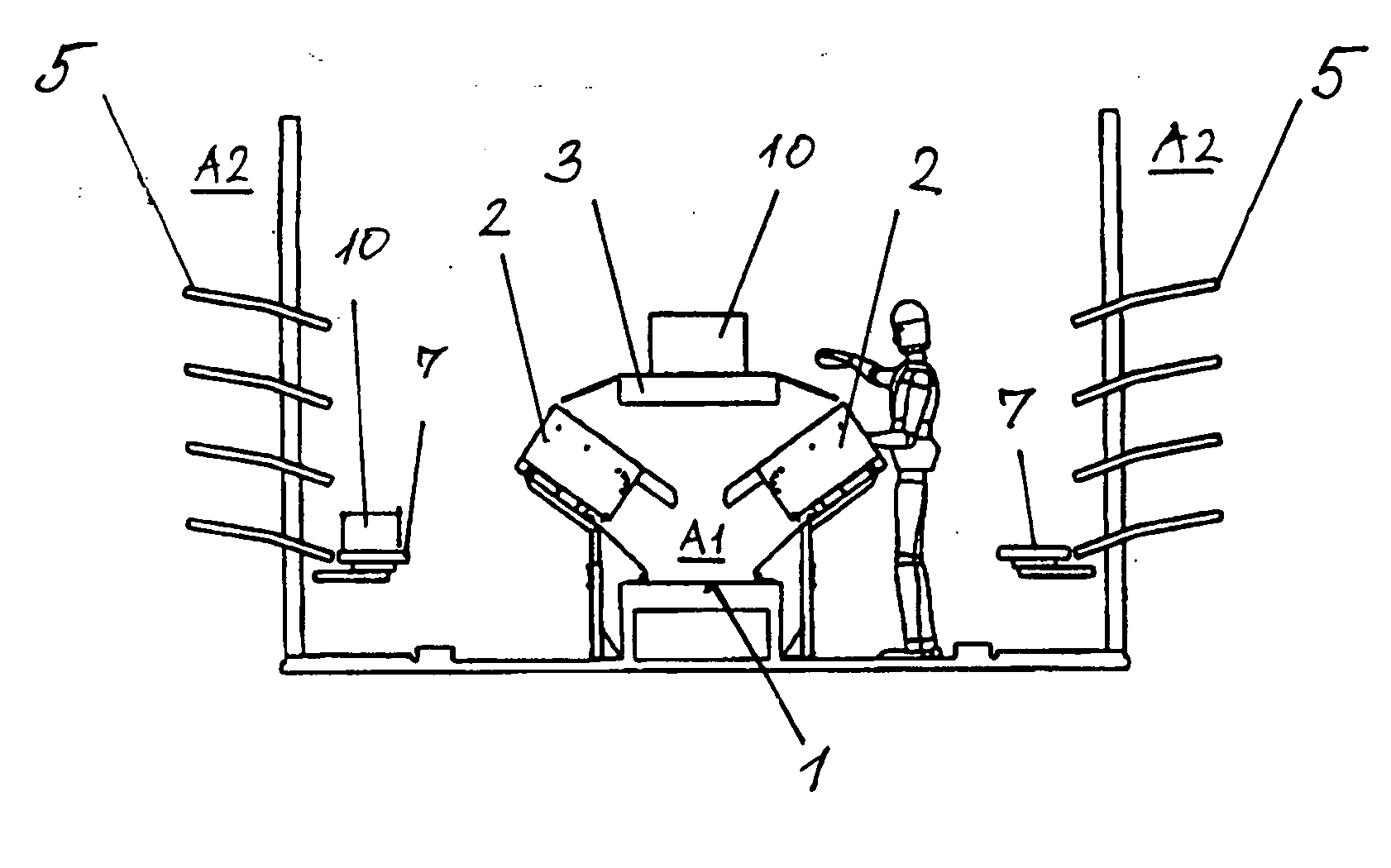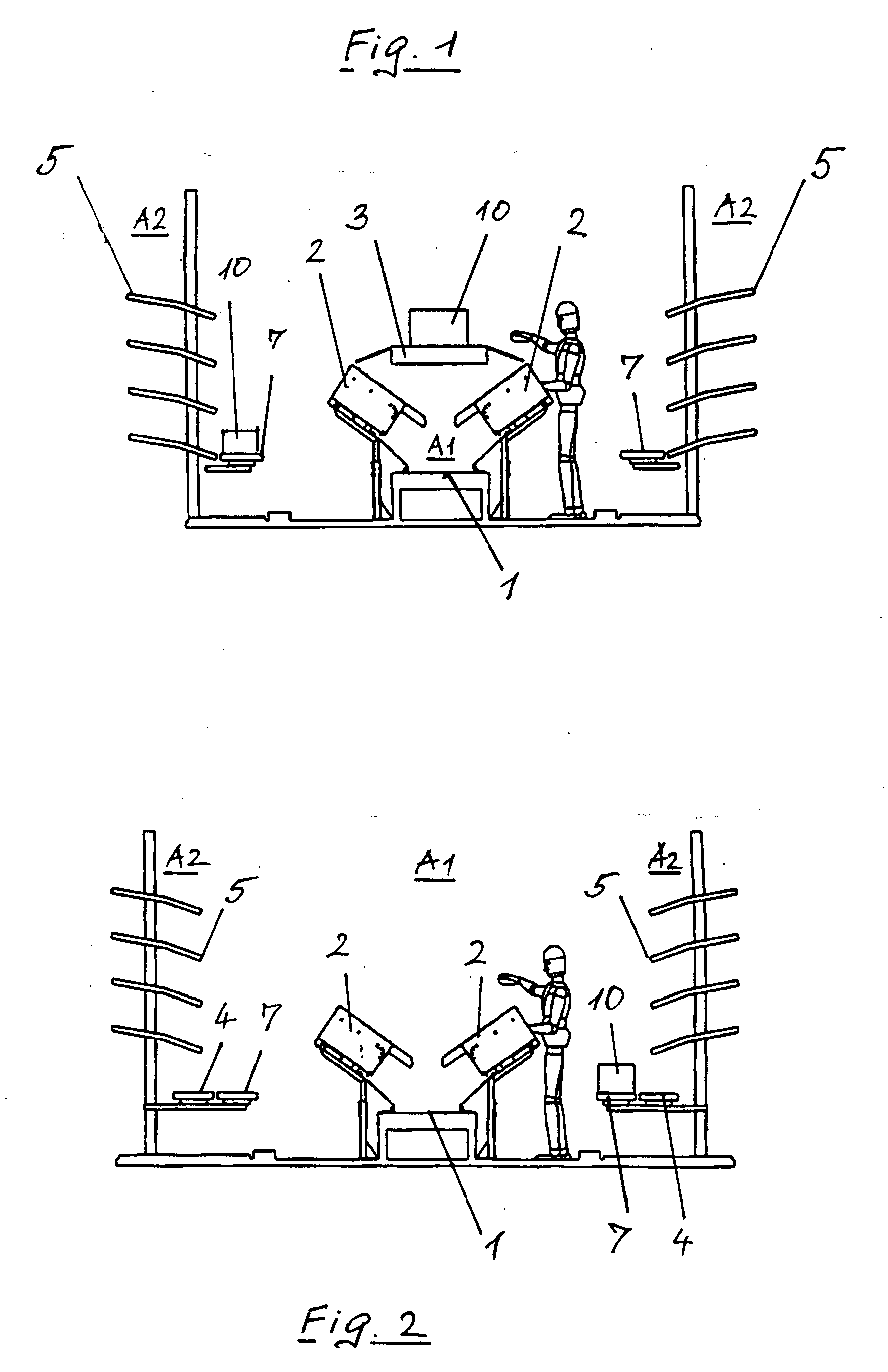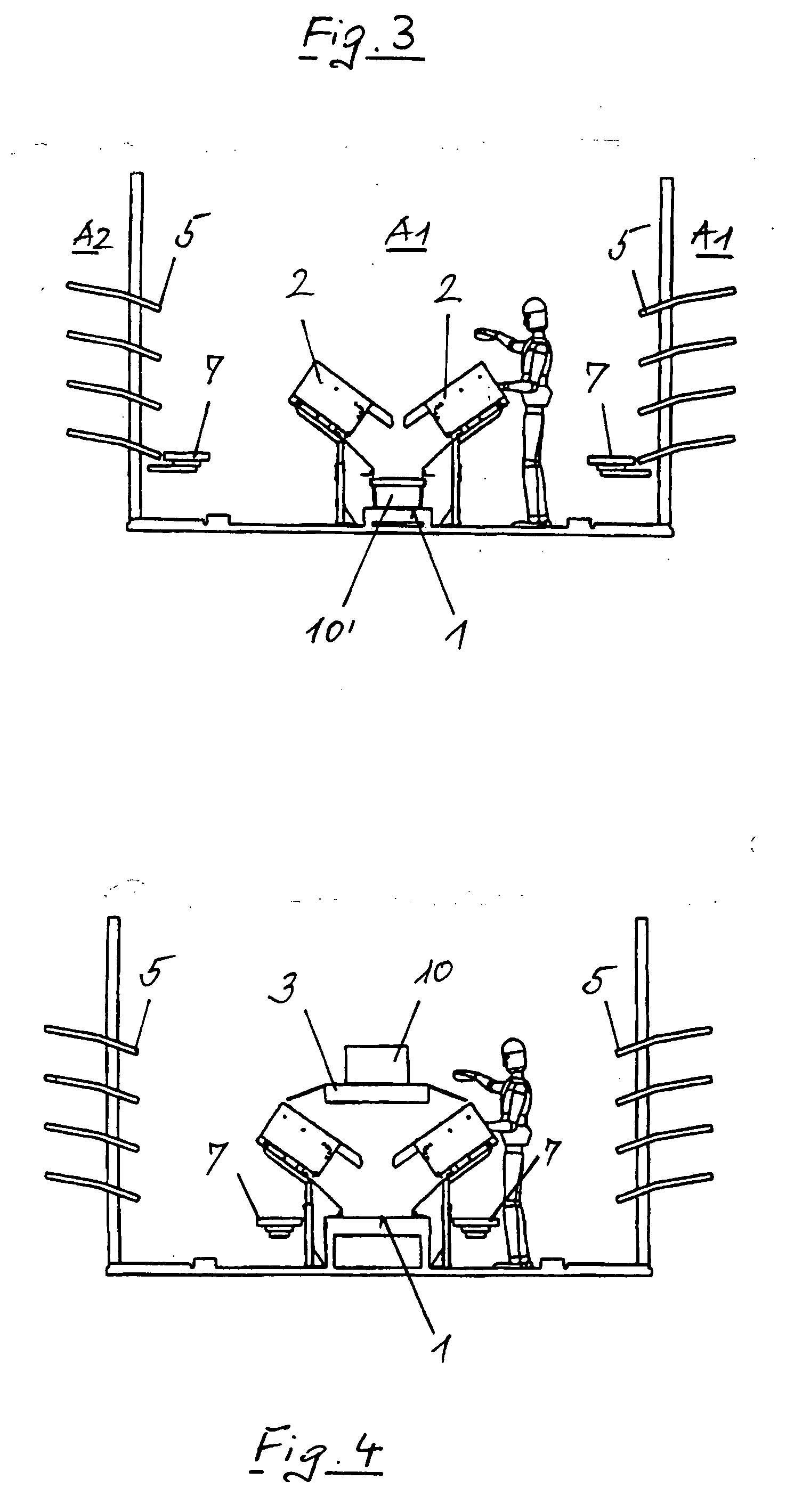Method and system for commissioning articles which are suitable for a central belt and articles which are not suitable for a central belt
a technology of central belts and commissioning systems, applied in the direction of conveyors, loading/unloading, conveyor parts, etc., can solve the problems of dividing the plurality of warehouse areas, affecting the commissioning effect, and unable to withstand the handling without damag
- Summary
- Abstract
- Description
- Claims
- Application Information
AI Technical Summary
Benefits of technology
Problems solved by technology
Method used
Image
Examples
first embodiment
[0027] According to FIG. 1, a first embodiment variant of a mixed commissioning system for commissioning articles A1 which are suitable for a central belt comprises a central belt commissioning device with a central belt 1 which is directly associated with or is arranged in the vicinity of a commissioning system for commissioning articles A2 which are not suitable for a central belt with a double shelf comprising two parallel shelves 5, which are arranged at spaced locations from one another and form a bay aisle.
[0028] The central belt 1 of the central belt commissioning device is located in the bay aisle between the two shelves 5 centrally and in parallel, and, furthermore, two rows of feed trays 2 are provided above the central belt 1 slightly offset laterally to the right and left. A removing path 3, which leads at its outlet (not shown) or longitudinal end to the corresponding longitudinal end of the central belt 1, is located centrally above the central belt 1.
[0029] A horizon...
sixth embodiment
[0046] The sixth embodiment variant corresponds essentially to the embodiment variant according to FIG. 5, but it additionally provides for discharge stations 9 at the only central belt 1, as this is apparent especially from the top view in FIG. 6, so that the pushing tracks become conventional manual commissioning stations. As a result, the containers / cardboard boxes do not have to be placed first on the system in the corresponding commissioning stations, but they can be charged in at a central loading point for the entire system or for a plurality of commissioning systems and discharged again at the corresponding commissioning stations. The amount of containers to be handled in the stations decreases as a result, as does the handling of the containers. The commissioning output is high.
seventh embodiment
[0047] The seventh embodiment variant according to FIGS. 7 and 8 has a handling as is described, in principle, in the variants 1 through 6, but it is separated for articles A1 which are suitable for a central belt and articles A2 which are not suitable for a central belt, but nevertheless within the same commissioning path or system. The articles A2 which are not suitable for a central belt are advantageously concentrated in such a system at the beginning of the commissioning path when viewed in the direction of conveying, because articles A1 which are suitable for a central belt can then still be commissioned in the running flow by means of an automatic commissioning unit, without thus having to run over a longer path.
[0048] As an alternative, arrangement of the articles A2 which are not suitable for a central belt at the end of a commissioning path is possible in this embodiment variant. The articles A1 which are suitable for a central belt are now complemented ultimately mainly m...
PUM
 Login to View More
Login to View More Abstract
Description
Claims
Application Information
 Login to View More
Login to View More - R&D
- Intellectual Property
- Life Sciences
- Materials
- Tech Scout
- Unparalleled Data Quality
- Higher Quality Content
- 60% Fewer Hallucinations
Browse by: Latest US Patents, China's latest patents, Technical Efficacy Thesaurus, Application Domain, Technology Topic, Popular Technical Reports.
© 2025 PatSnap. All rights reserved.Legal|Privacy policy|Modern Slavery Act Transparency Statement|Sitemap|About US| Contact US: help@patsnap.com



